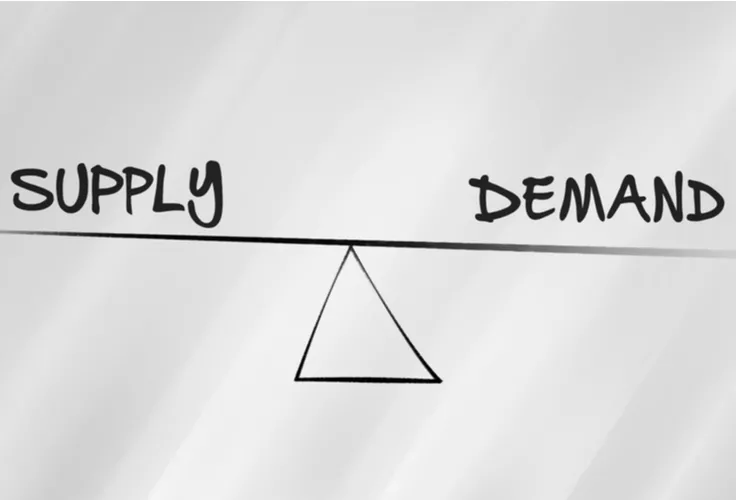Balancing the supply and demand for products creates issues for product manufacturers and sellers. Meeting these challenges requires robust logistical strategies designed for your specific supply chain.
Customers want their products immediately and of the highest quality. For manufacturers and sellers, supplying the products to meet customer demand is always an evolving pain point that is not easy to solve.
Ordering enough products to meet growing demand requires having the right amount of warehouse space and flexible supply chains so that manufacturers can fill seller orders on time and in the right amounts. Yet what happens when customer demand wanes? This issue leaves sellers with full warehouses of a product that they can no longer sell.
A seller will be frugal and cut back on the number of products that it orders from manufacturers. However, when customer demand rises, the seller will not have enough products on warehouse shelves to fill orders. This problem leaves manufacturers scrambling to make enough products to meet the seller’s requests, as the seller loses customers that do not want to wait for the backordered products.
FINANCIAL IMPACT OF OVERSTOCKING AND UNDERSTOCKING
Overstocking and understocking products can lead to a wide range of problems for a seller. When not having enough inventory, a seller cannot reap profits from unfilled sales orders. The seller has to deal with angry customers that are willing to take their business to the competition. In addition, a seller has to deal with overhead costs in maintaining a warehouse that is empty of products.
The manufacturer also experiences issues with understocking. It will suddenly be overrun with production orders when it is trying to please other customers. Its facility may not have the production capacity to meet the growing demands from the seller.
Overstocking on products has the opposite impact. A seller may hedge its product demand forecasts by filling the warehouse shelves with inventory. Yet if customer demand lowers or switches to a new trend, the seller is left with obsolete products and no buyers.
The seller has to deeply discount its products to get them out of the warehouse because the seller may lose potential profits. Its warehouse costs also increase as it must continue to manage the stock that cannot be sold while not having enough room to order other products.
SUPPLY AND DEMAND LOGISTICS
When searching for strategies to deal with supply and demand, logistical strategies should be a factor to consider. The movement of products from manufacturing production lines to warehouses and then to customers can create transparency issues on just how much stock is available to fill orders.
Suppose a shipment arrives at a warehouse but does not become inventoried correctly or placed on shelves. In that case, this problem can lead to the seller assuming that the product never arrived or that the order was never sent to the manufacturer. An additional order is sent, resulting in too much stock being delivered to the warehouse.
With logistical strategies and inventory management technologies, sellers have a better way to track the products. The inventory can be scanned correctly at the receiving dock, as the real-time data is updated in network systems. A seller knows how many products arrived on time and where they are located.
Also, supply and demand logistics can solve issues with understocking of products. If a manufacturer has an issue with its production processes, a seller can quickly implement the right strategies to locate a manufacturer that can complete its production order.
The seller can select the manufacturer closest to its warehouse location and region where customer demand is at its highest point. Then, the seller can work with transportation carriers to select the right routes and modes of transportation to get the products to their destinations.
HOW TO BALANCE SUPPLY AND DEMAND
Figuring out a correct balance in stocking enough products to meet demand without overstocking warehouse shelves requires enhanced supply chain visibility. Flexible logistical strategies can provide a range of benefits to ensure a seller has the proper supply and demand balance at all times.
These strategies may include:
- Inventory management technology for accurate product counts: Having accurate inventory counts can help a seller better manage products no matter where they are in the supply chain. A range of technology and apps are out there that can track products the moment they leave the manufacturer. Then, the seller can successfully route the products to where they need to go — whether it is to fulfillment centers, distribution centers, or warehouses based on accurate inventory levels.
- Efficient transportation routing to remove bottlenecks: Working with a 3PL, a seller can decide on the best transportation routes to rearrange inventory levels at different warehouse locations to accommodate fluctuating customer demand. The 3PL can provide cost-effective strategies to transport and store the inventory while distributing it whenever sales orders arrive or when warehouse stocks run low.
- Enhance manufacturing lead times: Investing in the right technology allows a seller to understand its lead times from when a product batch order is sent to a manufacturer to when the shipment is sent to the warehouse. Ordering times, and transportation routes, can be adjusted, so products reach warehouses at a specific time to replenish stock.
WSI 3PL SERVICES
At WSI, we help sellers deal with supply and demand balancing by offering a range of inventory management, warehousing, distribution, and order fulfillment services. We offer integrated logistical solutions designed to work with your specific operations and supply chains, so you can maintain your inventory at the right levels.
Contact WSI to learn more about our solutions for supply and demand logistics.

